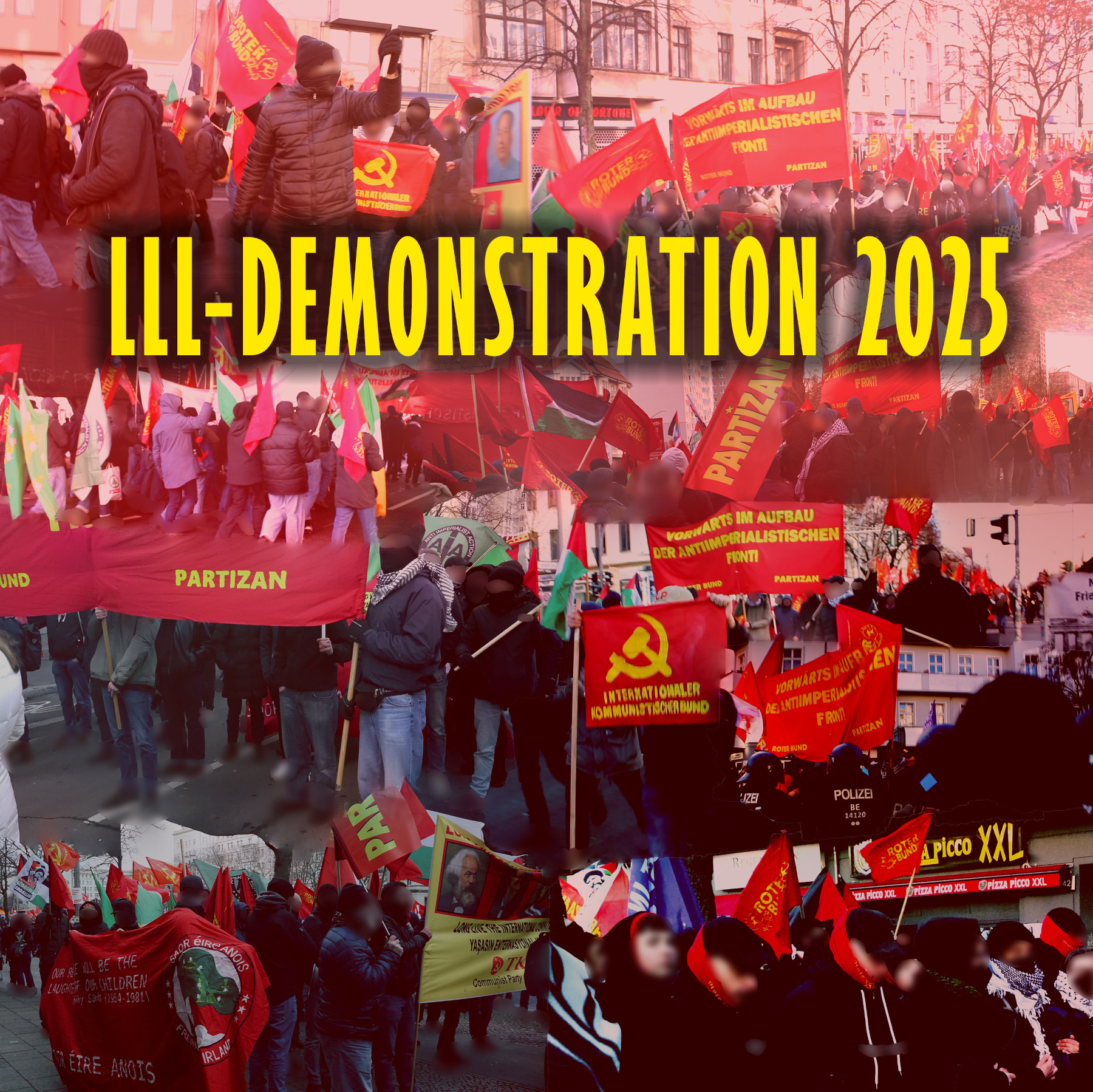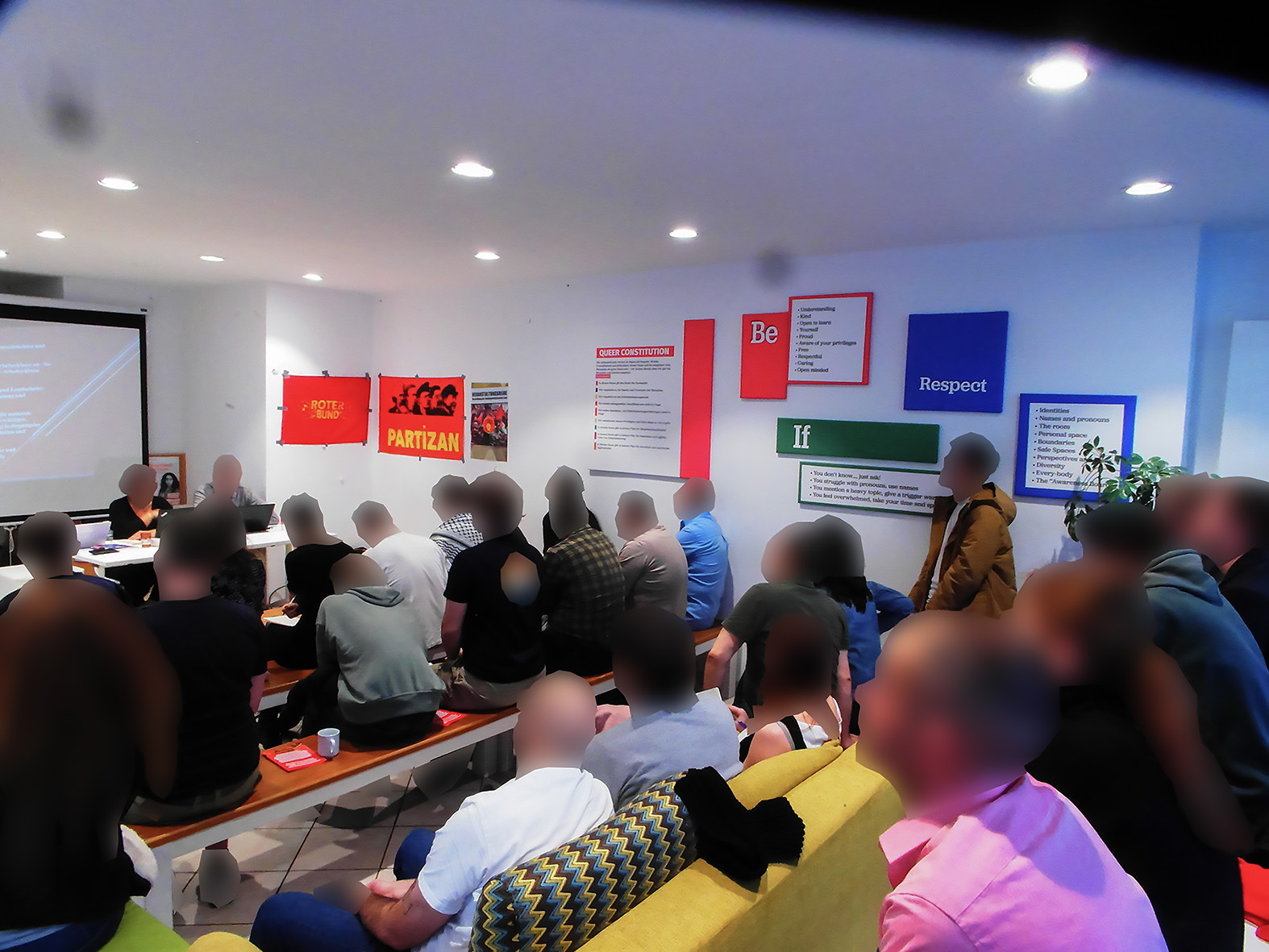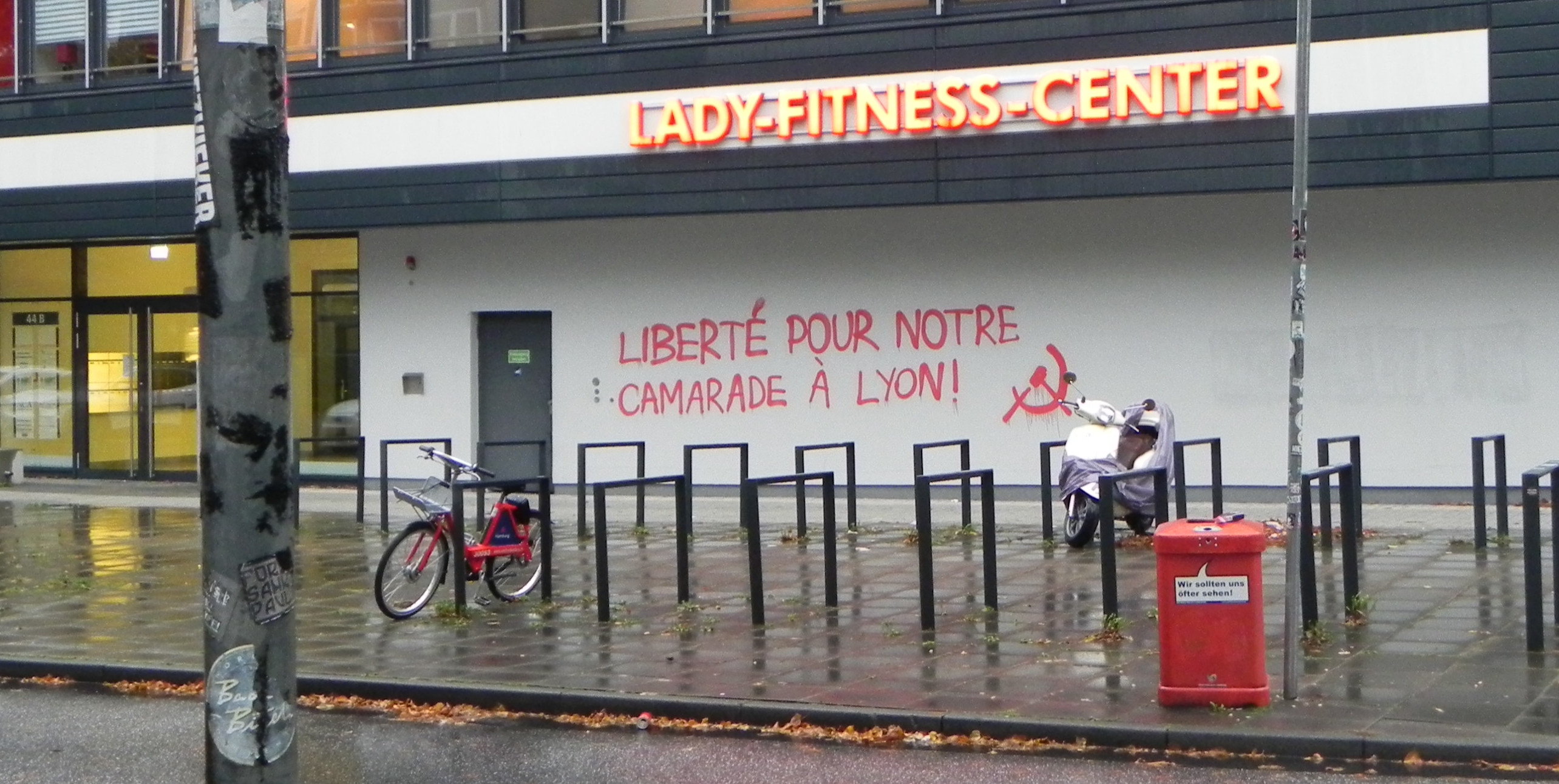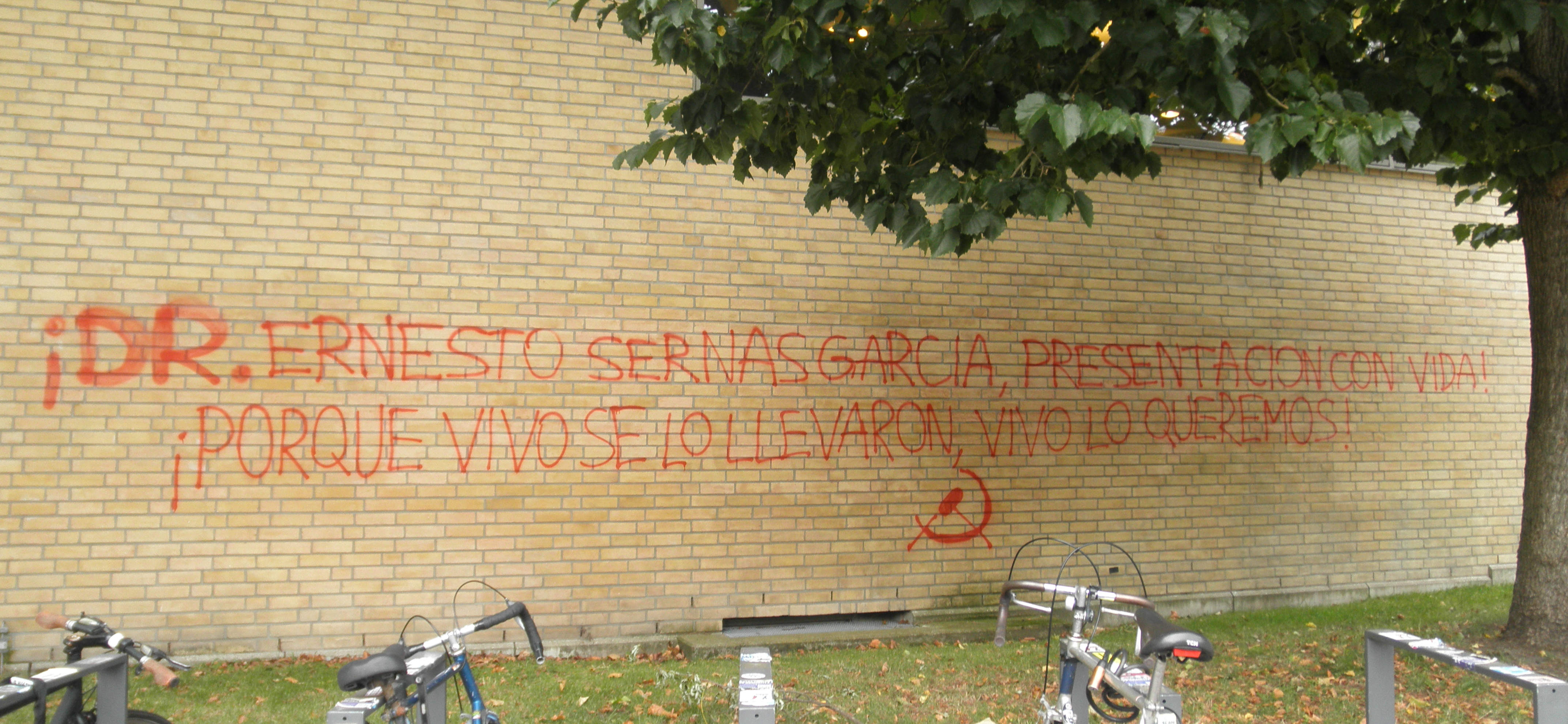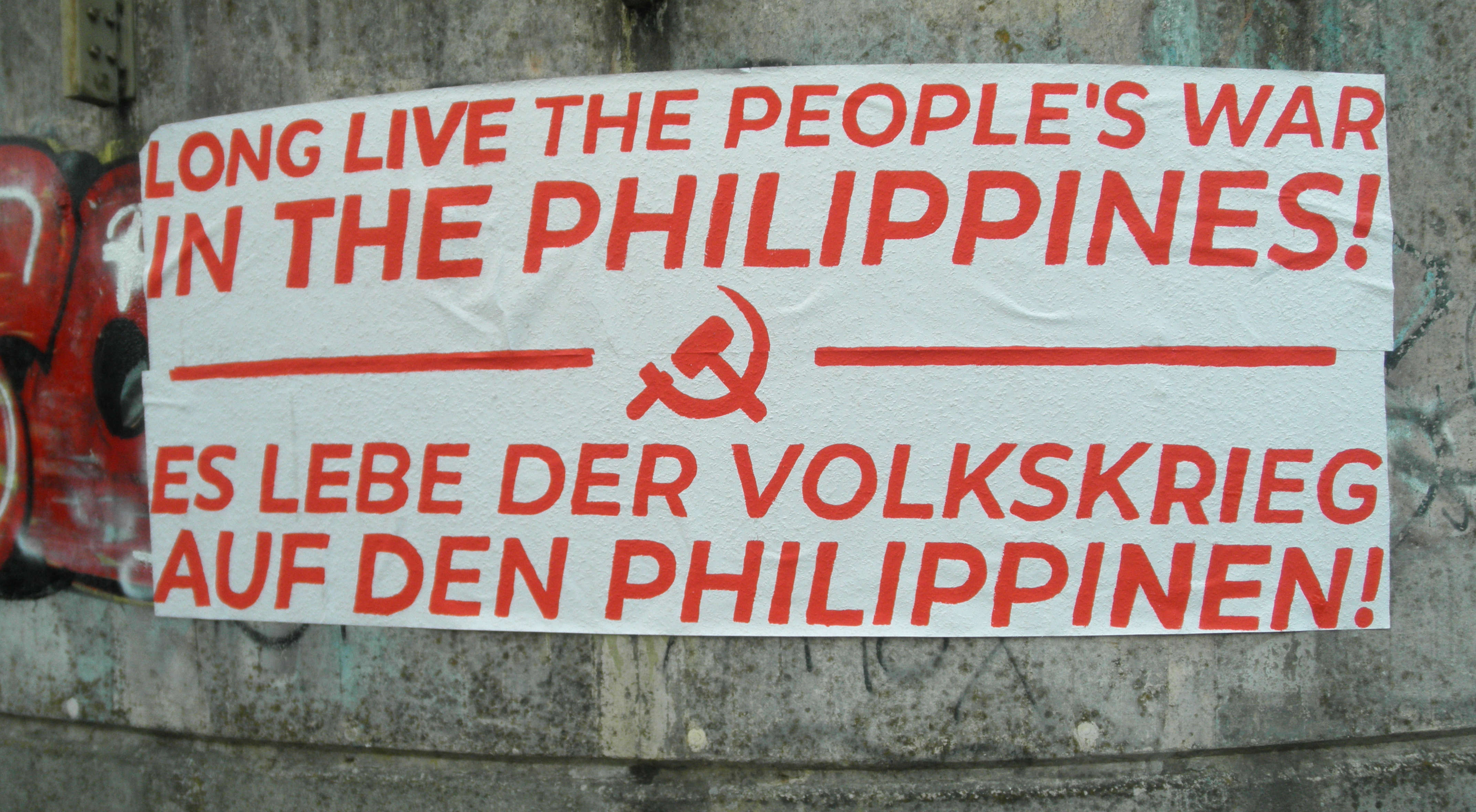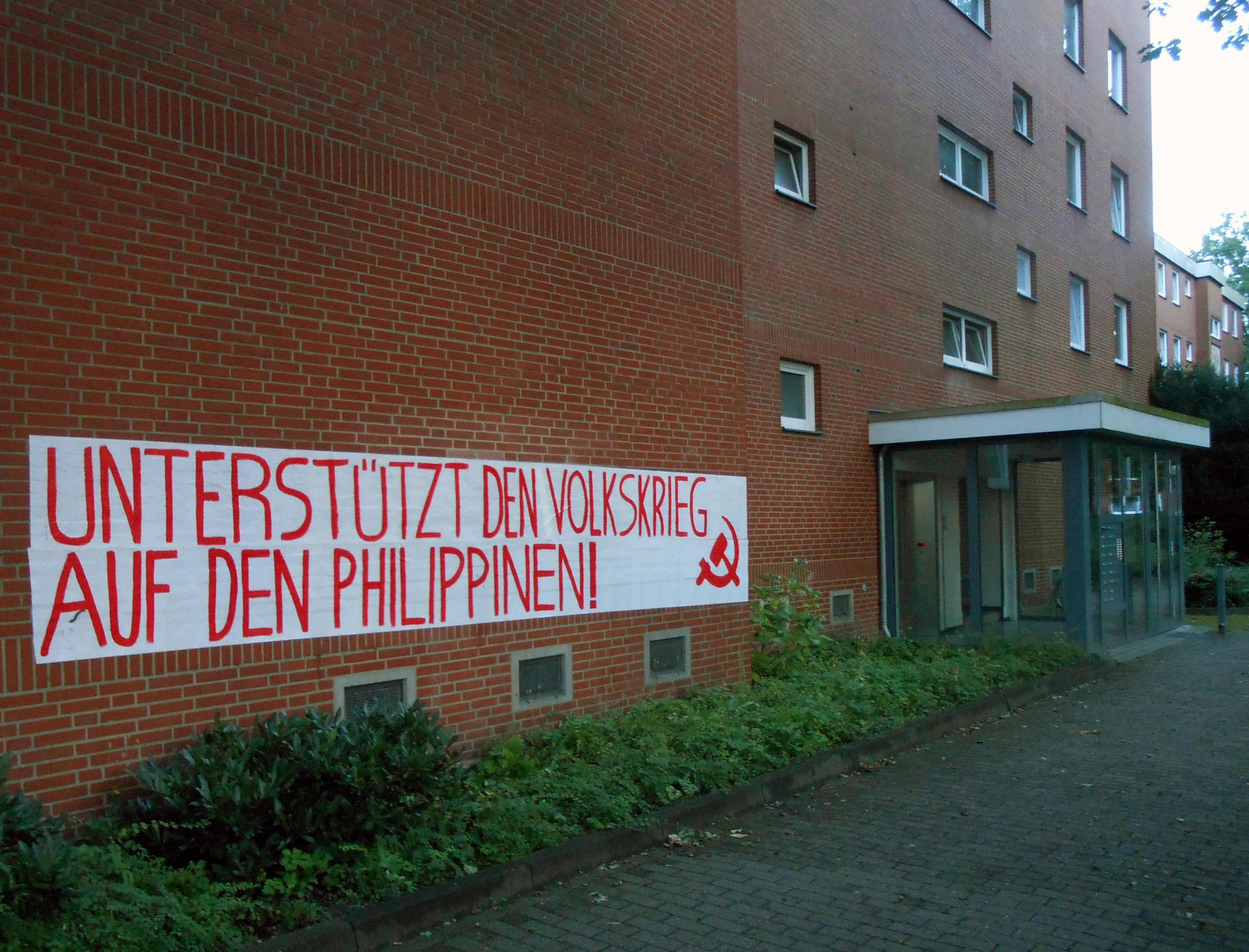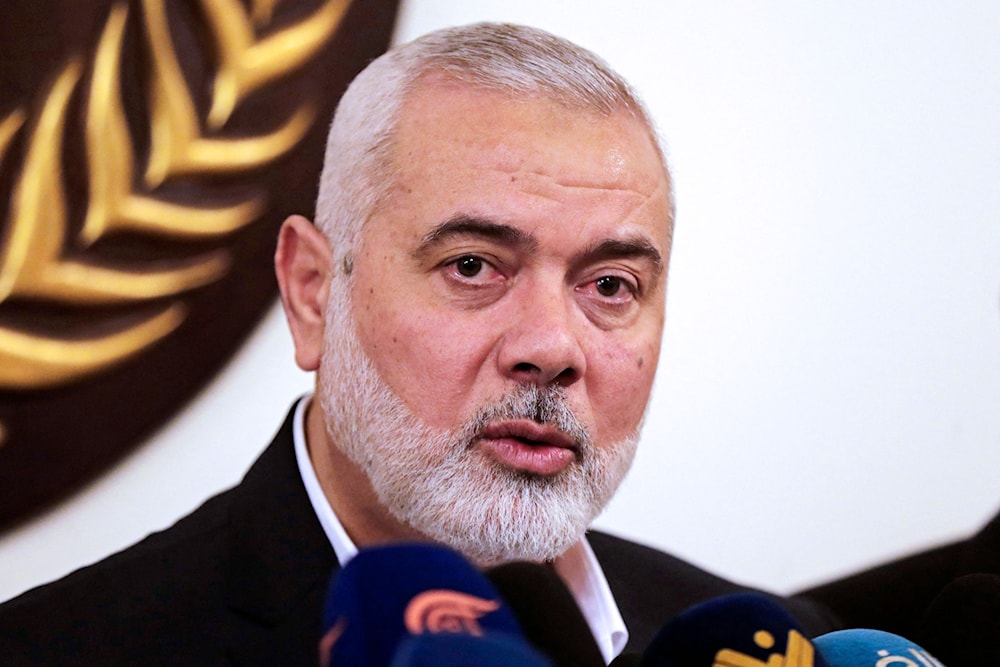The following is an article of the Parti Communiste Maoïste, that was published yesterday in French and English, that we mirror here for its importance:
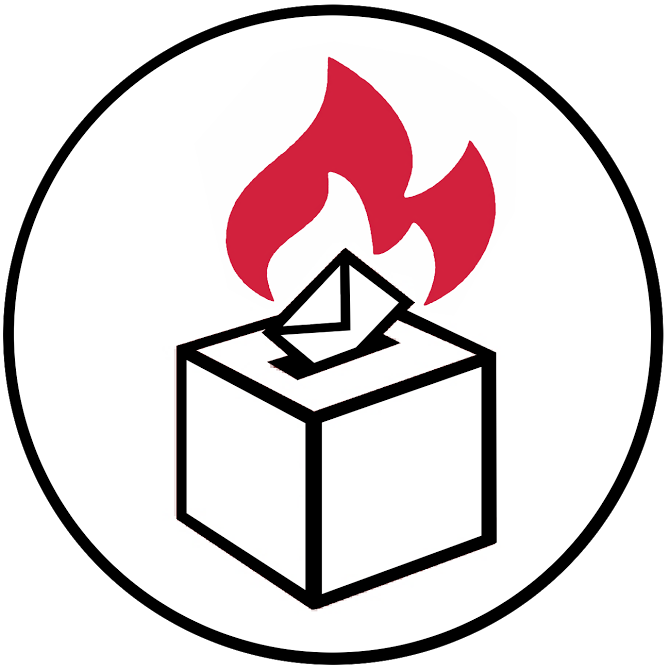
The Electoral Boycott for the Communists
The year 2018 has been marked by numerous elections around the world. Italy, Sweden, Brazil, the United States, in all of these countries the communists and revolutionary forces practiced boycott at the national level. In India, Communists have called for boycotting elections in states like Telangana, and in Canada, in the province of Quebec.
Last year during the presidential election, our Party had actively participated in the Boycott 2017 campaign, which continued until the legislative elections. One year after the election of Macron, the electoral standpoint showed its impossibility to change anything.
In the rest of the world, communists are adopting the same attitude: in imperialist countries like Germany and Norway, the elections of the previous years were boycotted, and in the countries where People’s Wars were initiated and supported, in India, in the Philippines, in Turkey, in Peru or in Manipur, the Communists are banished from the elections and their partisans are hunted by the State and its military apparatus. In the case of Peru, it is even on the occasion of a vote, on May 17, 1980, that the first tactical offensive of the People’s War was initiated in Chushi: it consisted in burning the ballot boxes and denouncing the electoral system.
There is therefore a general tendency to boycott elections among the international communist forces. In this article, we will explain this position in detail. We will explain the reasons for the use of this tactic today. Through this year’s examples in Brazil, Quebec and the United States, we will show its ability to structure the revolutionary camp against the rise of fascism and revisionism. Finally, we will draw lines of demarcation with the dogmatic and idealistic usage of voting or abstaining in the bourgeois states in the epoch of imperialism, and we will link the boycott tactics to our general strategy for the revolution.
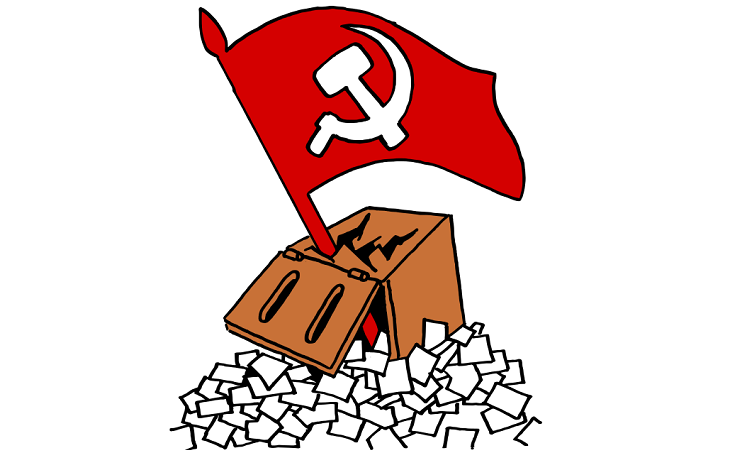
Brazil: active resistance against fascism
The current period is marked by a rise in forces advocating the establishment of a fascist system of government at the top of the bourgeois state. This rise is currently mainly reflected in electoral aims, and the candidates and fascist parties are taking advantage of the collapse of the false bourgeois democracies in order to become favorites in a number of electoral farces. Part of the bourgeoisie uses this situation, which it has itself created, against those who refuse to vote, and then say: “Abstentionists serve the far right.”
The elections in Brazil shows us what lies behind this false claim. The Brazilian state, a client of imperialism, has proven for a long time to the masses that nothing should be expected from it. The “moderate” parties of the compradore bourgeoisie (those who sell their own country to foreign imperialists) are discredited in the eyes of all. The corrupt administration of the “Partido dos Trabalhadores” governments, so-called reformers, continued to reveal the true face of bourgeois politicians. This PTist administration quickly revealed its comprador nature by using the state’s bureaucratic capital for its own profit. This is shown by the Petrobras case, which brought down Lula and Dilma Roussef, the main popular leaders of the PT.
In this situation, the elections that took place in October 2018 were upstream affected by numerous scandals, such as the Lula being put out of the election by the entire conservative and reactionary faction of the Brazilian bourgeois compradores and landowners. Without its standard bearer, it was certain that the PT would suffer an unprecedented setback. A setback at the level of the detestation of the people for the lies of PTism, which applied military solutions to the problem of violence in working-class neighborhoods and expelled thousands of people from their homes to organize sports events like the Football World Cup. It was under this government that 23 Brazilian revolutionaries who revolted in demonstrations against the organization of the World Cup were arrested and imprisoned.
The second particular point of the Brazilian elections of 2018 is the rise of Bolsonaro and his party, the PSL. This fascist candidate had the support of the army (his partner for the vice-presidency being a former general) and imperialist powers for which the Brazilian state is a client through financial markets. With these allies, he was sure to grab the votes of those nostalgic of military dictatorship and of all the reactionary classes of Brazil in addition to their sphere of influence. In case of defeat, Hamilton Mourão the partner of Bolsonaro had announced, a coup de force was conceivable.
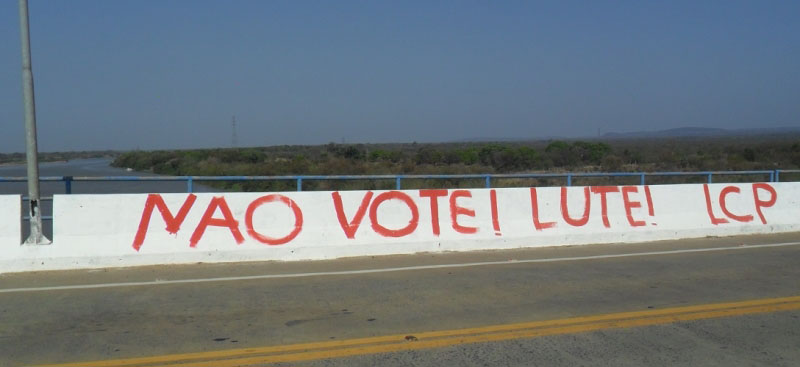
In this context, the revolutionaries and the communists of Brazil practiced a boycott as a tactic of resistance against the State of the landowners and the compradores and their most reactionary fringe, the fascists. Many revolutionary mass organizations, peasant organizations, student organizations, newspapers, the women’s movement … have actively promoted this boycott in rural communities and cities. In the villages, the state had sent the military police to force the vote and discourage attempts to boycott (voting is mandatory in Brazil). In the cities, the universities were repeatedly invaded by police forces to intimidate students who displayed anti-fascist slogans and went to protest with banners that indicated “No election or military intervention” (Nem eleição, nem intervenção militar). The result in the votes, in the first round, was more than 40 million non-voters. Many actions of struggle deemed illegal by the government have developed: determined actions such as the destruction of ballot papers and ballot boxes in Brazilian villages or the formation of combat groups against the military police to ensure the safety of the masses boycotting the election.

Immediately after the first round, when Bolsonaro came firstin the votes, it was clear that the anti-fascist front would not come out of the polls, and that the rise of fascism in Brazil was already very important. The comrades redoubled their boycott, knowing well the anti-communism of Bolsonaro and were met with renewed attacks from the State. In the second round, 42 million people did not vote. Bolsonaro won the election, which means that the revolutionaries and communists of Brazil must prepare for the rise of a fascist to the presidency. This long and combative campaign of boycott prepared them to this, and showed them what the popular masses of their country were waiting for in the face of false democracy. The boycott is therefore in this case directly related to antifascism and the construction of the revolutionary movement. An electoral front would never have been able to adopt this role, since it would have come back as a way to tell the masses that the most important thing was to save a rotten system of government, which has guaranteed their misery for decades.
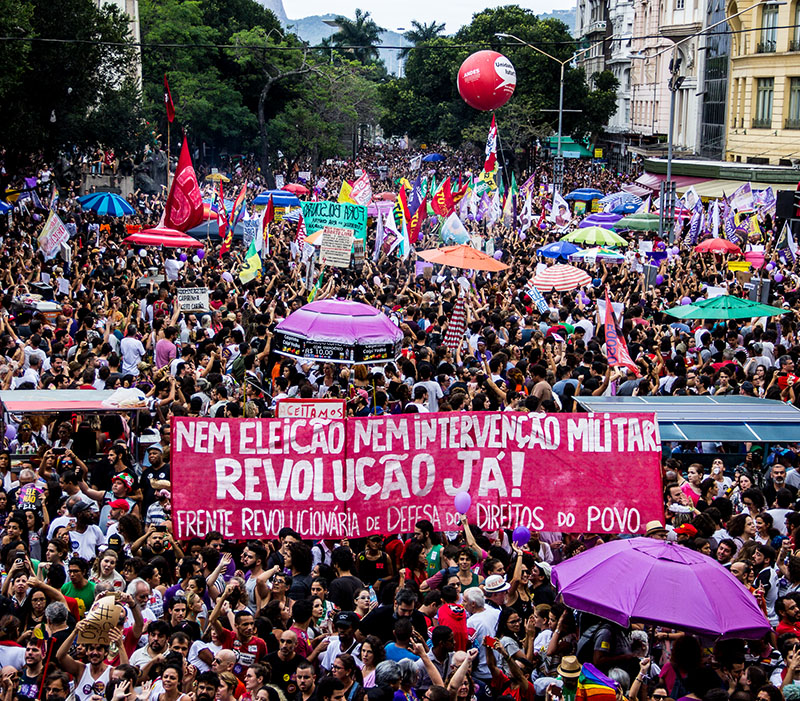
In North America: the development of a militant and antirevisionist boycott
In Canada, specifically in Quebec, as well as in the United States, two imperialist countries, the boycott was also applied in the 2018 elections. In both countries, the colonial origin of the state plays an important role.
In Quebec, a campaign of militant boycott was waged against the provincial elections, preparatory to next year’s federal election. The outcome of this campaign was a great urban celebration, the very evening of the elections. This shows that determined forces, even in the revolutionary movements in construction in the imperialist countries, can deploy spectacular actions and reach the masses through these means.
In the United States, the context was that of Donald Trump’s midterm elections. The Democrats, humiliated by their defeat in the presidential elections, pushed their campaign hard in order to have a majority in the chambers of the Congress. This meant a “leftist” pressure put forward by the Democratic Party (an imperialist party responsible for innumerable invasions, far from being an ally of “anti-fascism”). In practice, it was the revisionists and the American “social democrats” who served as useful idiots to present this campaign as an opportunity for the “socialists” of the country. In fact, the Democratic Party’s elected members of this trend are vocal defenders of US imperialism and its international allies. Their election to federal office, the highest level in the American system, is not a victory for the masses, whether they live in the United States or elsewhere. The electoral system can not bring any victory.
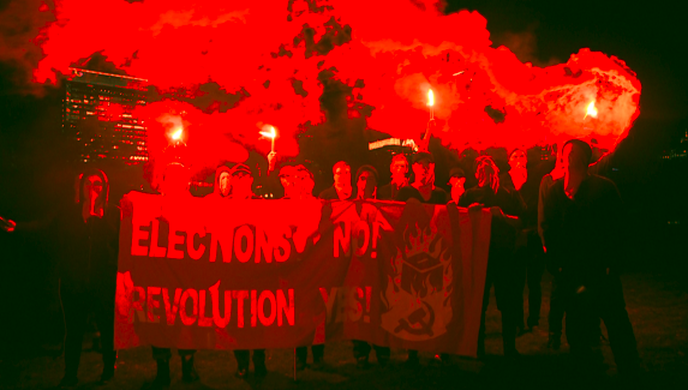
This truth is well understood in the United States, a country where abstention is usually massive. This poll attracted 49.6% of voters, a significant relative increase, but a very low absolute result. This means that despite the largesse of the American system (vote spread over several days with anticipated votes, electronic voting, massive incentive to vote …) more than one in two voters abstained from these elections despite the hype set up by politicians and the media.
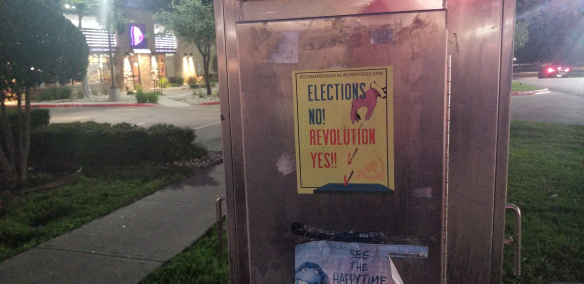
The boycott is a tactic, subject to a general strategy of building new power
With Brazil or the United States, there are examples of electoral boycotts led by the communists during the year 2018. Does this mean that the boycott is a posture that applies at all times, and everywhere in the same way? The answer to this question is no, the boycott is not a position of absolute principle, but a tactic practiced by the communists in the false bourgeois democracies. It therefore starts from the concrete situation in the country and consists not only in refusing the electoral system but mainly in applying a political line related to the masses and the state of their organization at a given time.
In 2018, whether in semi-colonial semi-feudal countries or in imperialist countries, communist parties practice this tactic when the elections present themselves. The so-called “communist parties” which accepted the parliamentary system with open arms (like the revisionists in Nepal in the late 2000s) revealed to the masses that they were traitors and would not lift a finger for the revolutionary fight once comfortably installed in their armchairs of compradores in the parliament.
The international communist movement has, in its long history, developed a political line on the issue of elections. However, this line is often ignored in favor of a dogmatic and opportunistic uses of texts written by great theoreticians of communism. In the French state, this is the case of the revisionist forces, for example, who take part in every election, and spend a large part of their resources preparing them.
In a theoretical paper from 2016 on the elections, Lutte Ouvrière justifies for example its participation by quoting Lenin in The Infantile Disease of Communism, when he evokes in Russia between 1903 and 1917: “the various forms of the movement, legal and illegal, peaceful and stormy, clandestine and open, parliamentary and terrorist, circle and mass. ” This quote, taken out of context, refers to the fact that the Bolsheviks participated in the State Duma (Parliament) set up after the revolution of 1905 in Russia. The Duma was then a revolutionary conquest in opposition to the class forces of the Russian tsarist state (land aristocracy transforming into a monopolistic bourgeoisie) because it was mainly composed of middle bourgeois parties, petty bourgeois parties, and the proletarian party (the PSDOR of Lenin ). Several times after 1905, the Tsar personally repressed the Duma when it was in opposition to its power.
On the boycott, Lenin wrote in 1906: “Certainly to subordinate the campaign for the Duma to the main struggle, reserving for this campaign the second place, in anticipation of an adverse outcome or an adjournment of the battle to the day after the experience of a second Duma, – it is always, one might say, the old tactic of boycott. Formally, such a definition can be maintained, because the “preparation for the elections” – besides the always compulsory work of agitation and propaganda – is reduced to detailed material preparations; and it is very rare that they can be done long before the elections. We do not want to discuss words; but, basically, this is a consistent development of the old tactics and not its repetition, it is a deduction from the old boycott, it is not a reissue. ”
Far from upholding dogmatically the elections and overestimating the value of the Duma, he took it as a specific revolutionary conquest, a new and secondary arena of struggle in the Russian Empire of 1906, which therefore demanded a development of revolutionary tactics!
It is clear that the situation of the French state (or even of the European Union since the revisionists also want to be elected there …) today is not at all the same. In the Russian context, the participation in the elections was not a “testimony” like that of the revisionists in 2018, it was a first act of construction of the double-power. To be present in the Parliament won by the previous revolution and to be present outside Parliament to prepare the future revolution was for Lenin a way of building the new power in Russia. In the French state or in the European Union of 2018, parliaments and electoral posts are not at all revolutionary conquests. They are the middle wheels of an imperialist state and alliance belonging to this same class. So we can not treat them the same way.
To ignore that the deadlines decided by the bourgeois state are moments of struggle for our camp by eliminating them from our analysis is as much a mistake as devoting all our forces to an electoral strategy. We have many examples of these two errors, since the revisionists systematically fell for them when they gave up on the revolutionary perspective, that is to say, the strategy of seizure of power. This strategy, for the communists, is the Protracted People’s War. It leads the use of tactics in order to initiate and win the masses’ revolution for the construction of their new power against the state. In this perspective, in 2018, a tactic of boycott is part of this strategy. It must aim in all of its aspects to convince the masses that the alternative is not “Tweedledee and Tweedledum” in elections, but our power against their power, the power of the working class and the masses against the power of the bourgeoisie.


